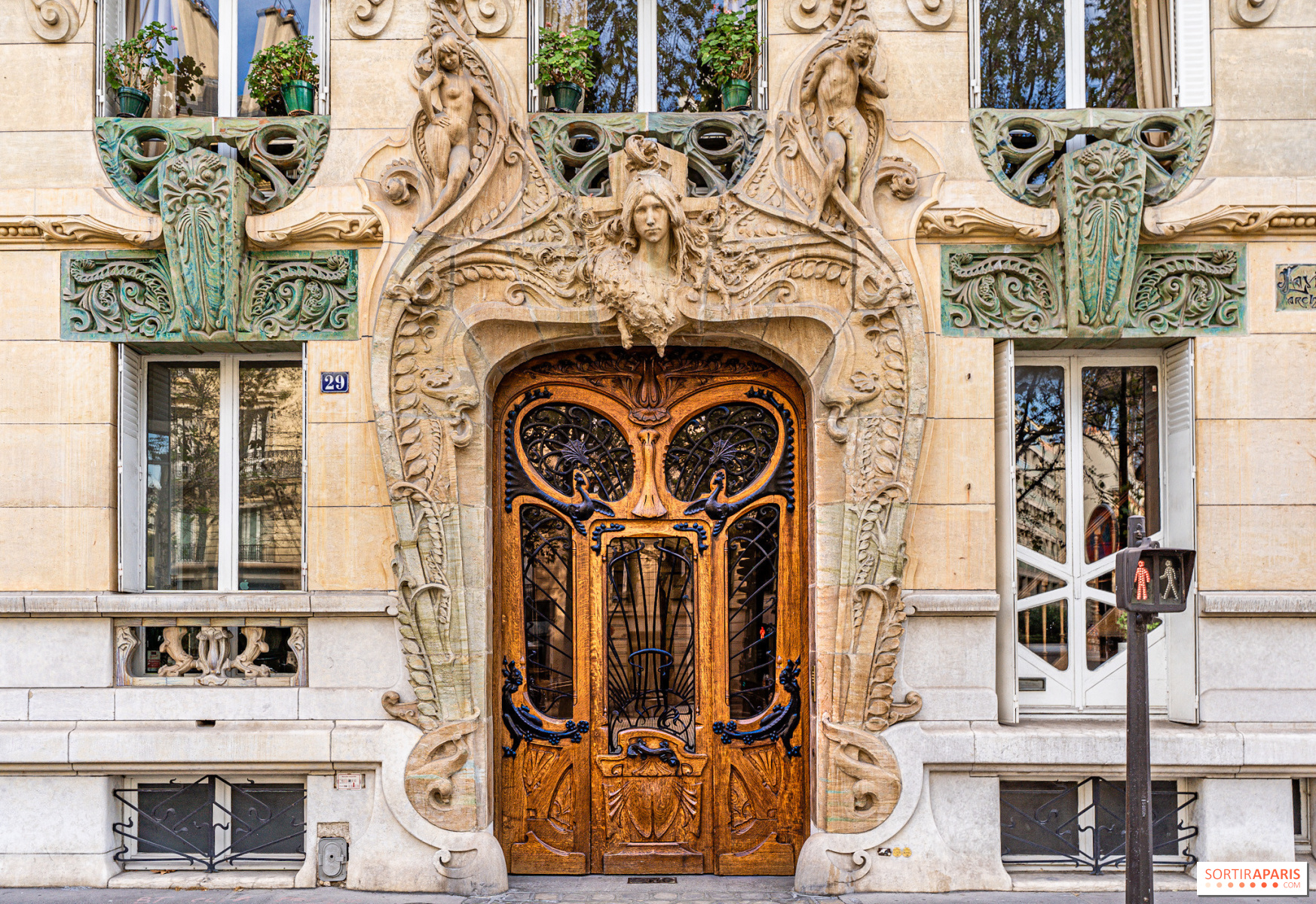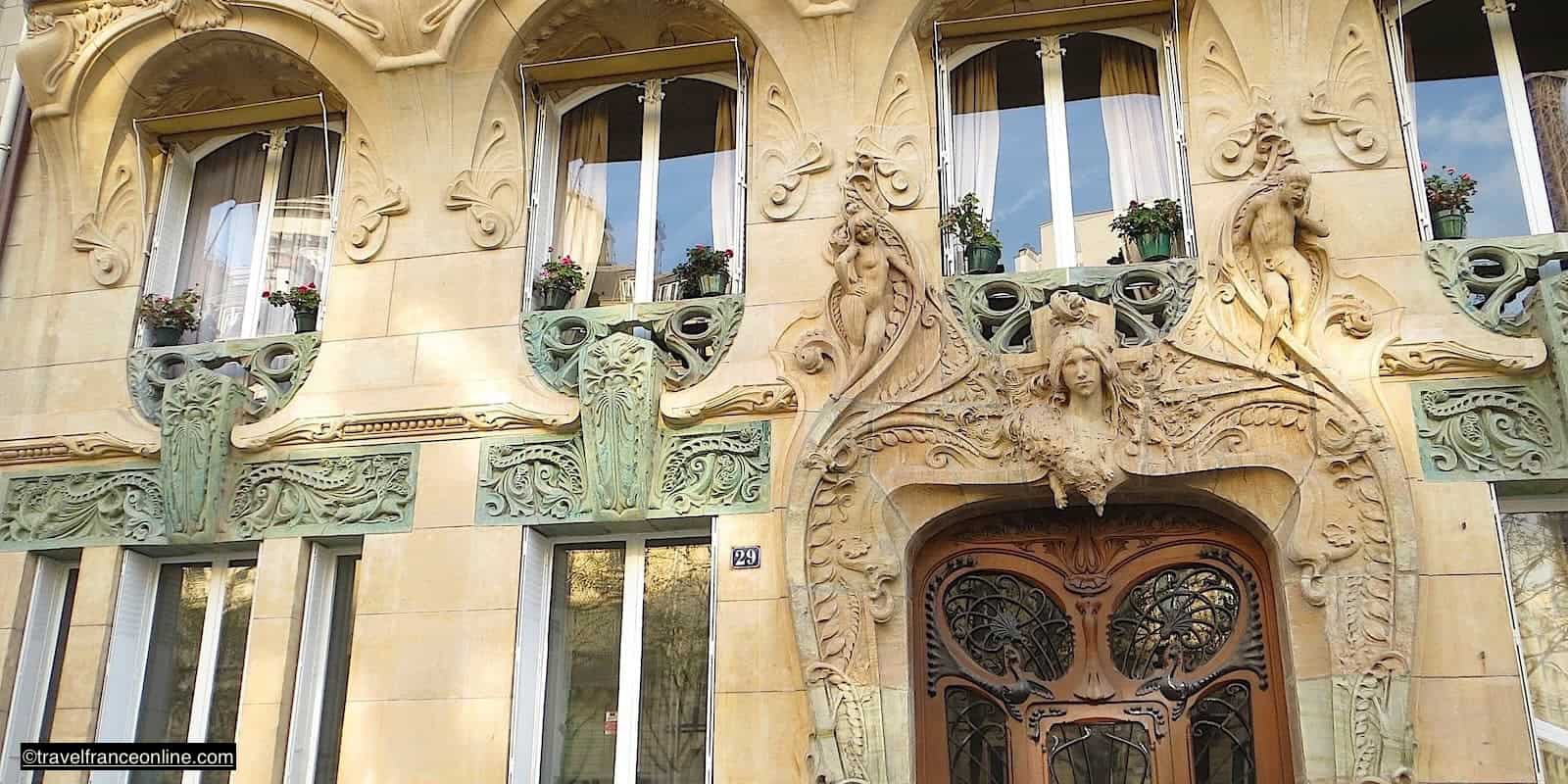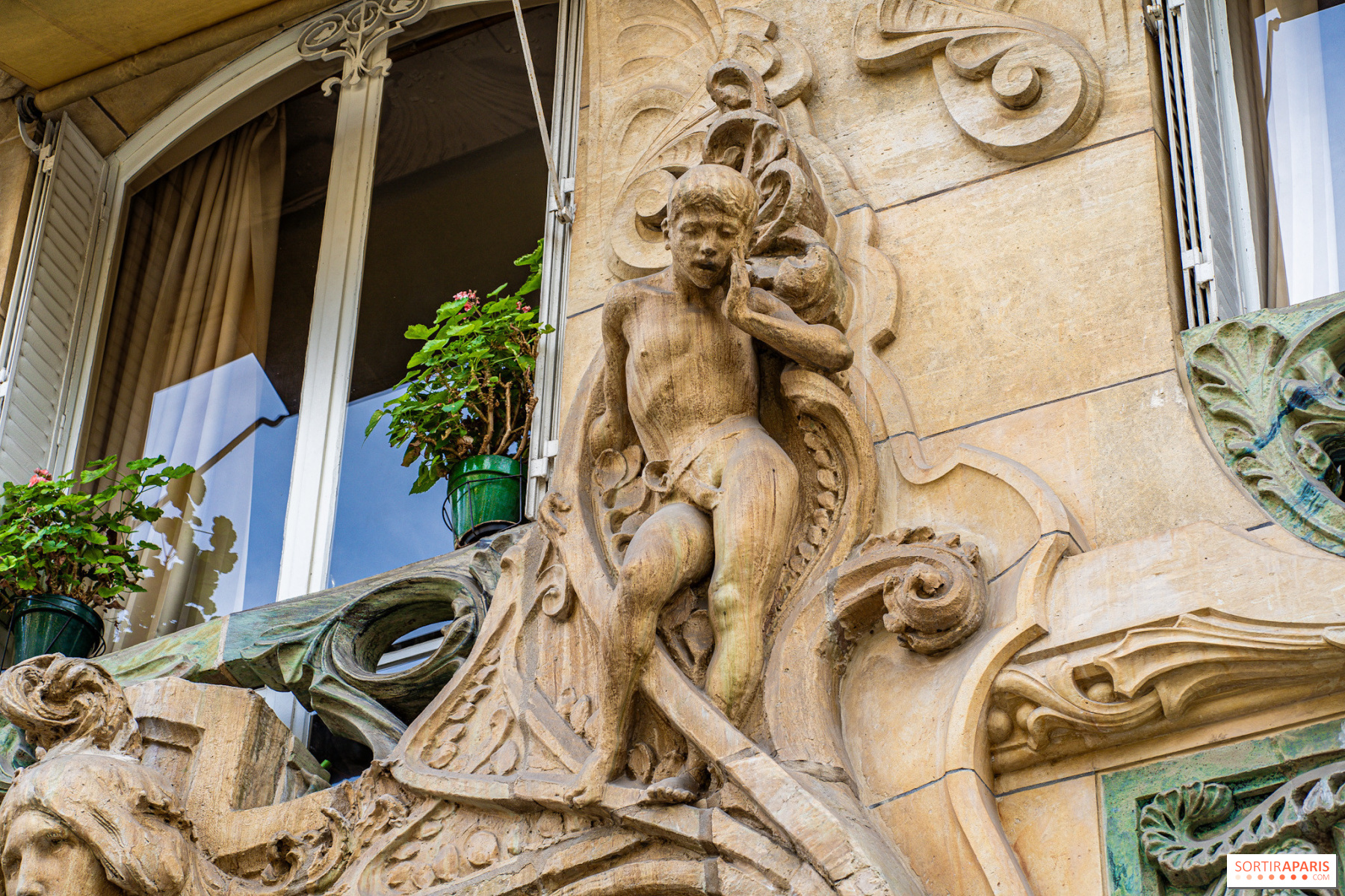Paris, a city celebrated for its architectural beauty and historical significance, is home to numerous landmarks that showcase its cultural legacy. Among its many famous doors, none stands out quite like the one at 29 Avenue Rapp. Designed by the visionary architect Jules Lavirotte in 1901, this door is an extraordinary example of Art Nouveau design, reflecting the artistic principles that defined the movement at the turn of the 20th century.
A Sculptural Masterpiece of Organic Design
The door at 29 Avenue Rapp is not merely an entrance; it is a sculptural masterpiece. Lavirotte’s design incorporates intricate carvings of flowers, vines, and surreal creatures, all seamlessly flowing together in organic, sinuous curves. These elements are characteristic of the Art Nouveau style, which sought to merge art and nature by using curving lines and floral motifs to create a harmonious and fluid composition.

The detailed carvings evoke a sense of life and movement, with each element—from the delicate tendrils of ivy to the fantastical, biomorphic creatures—designed to reflect the rhythms of nature. This focus on natural forms was revolutionary, as it stood in stark contrast to the rigid, geometric shapes of earlier architectural styles. The door’s flowing design embodies the ethos of Art Nouveau, emphasizing beauty and functionality without sacrificing creativity.
A Symbol of Artistic Freedom and Innovation
Beyond its aesthetic appeal, the door at 29 Avenue Rapp carries significant historical and cultural importance. The building and its famous door stand as a testament to the artistic and architectural innovations of the Art Nouveau movement, which flourished in Paris during the late 19th and early 20th centuries. Lavirotte’s work was part of a broader trend in which traditional forms and structures were discarded in favor of more dynamic, expressive designs that could better capture the spirit of the modern era.

The Art Nouveau movement was characterized by its break from classical architectural forms, embracing organic shapes, flowing lines, and ornamental details. The door at 29 Avenue Rapp exemplifies this shift, not only as a work of art but as a statement of artistic freedom. It reflects the spirit of innovation that defined Paris during a time of rapid industrialization, cultural flourishing, and technological advancement. The door serves as both a reflection of the city’s transformation and an expression of the creativity and optimism of the early 20th century.
An Enduring Parisian Icon
Today, the door at 29 Avenue Rapp remains one of Paris’s most iconic architectural features. Despite the passage of more than a century, it continues to captivate visitors from around the world, serving as an enduring symbol of Parisian elegance and the timeless beauty of Art Nouveau. Lavirotte’s innovative approach to design has left an indelible mark on the city, and his door stands as a reminder of Paris’s ongoing influence as a hub of creativity and cultural expression.

As both a piece of architectural history and a work of art, the door at 29 Avenue Rapp embodies the ideals of Art Nouveau: the integration of nature, art, and design into a cohesive, visually striking whole. It remains an inspiration for architects, designers, and art lovers, reflecting the enduring legacy of a movement that sought to break boundaries and redefine the role of art in everyday life.
Conclusion: A Testament to Parisian Elegance
The Art Nouveau door at 29 Avenue Rapp is much more than an architectural feature; it is a work of art that has come to symbolize Paris’s creative spirit and its dedication to elegance and innovation. Designed by Jules Lavirotte, it stands as a testament to the power of architectural design to evoke emotion, inspire creativity, and capture the essence of an era. As visitors continue to marvel at its beauty, the door at 29 Avenue Rapp will undoubtedly remain a timeless icon of Parisian elegance and the enduring allure of Art Nouveau.

